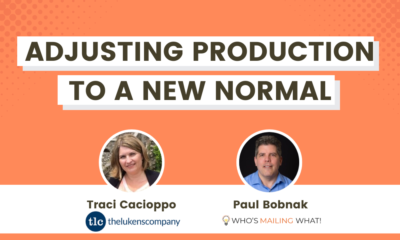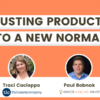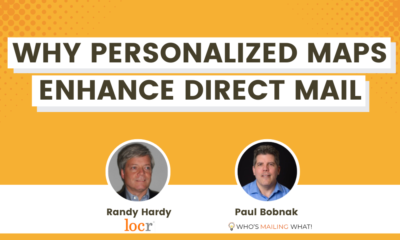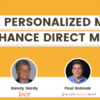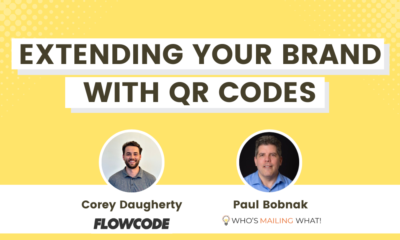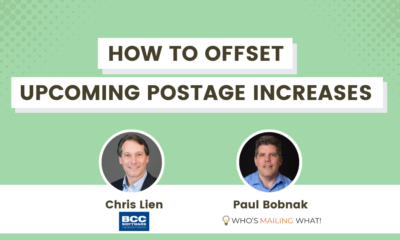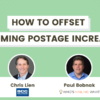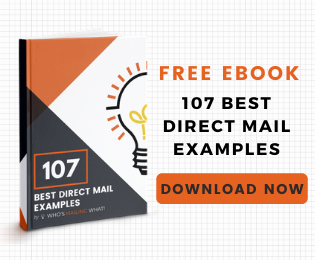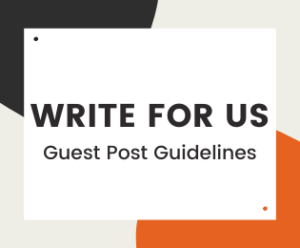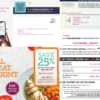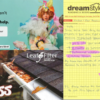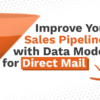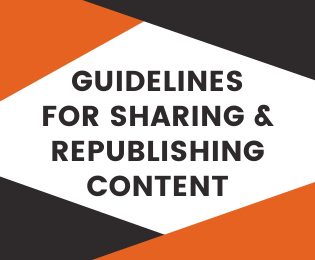MEET THE MAILERS
Meet the Mailers: Transitioning to Marketing Services
In this episode, we talked with Modern Postcard about the advantages of postal retargeting in any vertical, including B2B and non-profit, proactive vs. reactive marketing, and exciting trends in direct mail.
In this episode, I talked with Keith Goodman. A popular industry speaker, he is Vice President, Corporate Sales and Marketing of Modern Postcard.
Headquartered in Carlsbad, CA, Modern Postcard manages all printing, mailing, and shipping services, as well as integrated digital marketing solutions, in-house. We talked about how the company has progressed into a 1-stop shop for marketers by going omnichannel:
[B]y layering in these services, we’re actually able to create some very, very accurate attribution models … it helps both the SMB marketplace and makes it easier for them to start to layer in these services. But it also gives these larger organizations a lot of information they didn’t have before about how layering in these different services can cut down the cost of customer acquisition.
 Keith GoodmanVP, Corporate Sales and Marketing
Keith GoodmanVP, Corporate Sales and Marketing
Modern Postcard
Among the many topics we covered:
- How Keith used direct mail earlier in his career in entertainment and technology
- The advantages of postal retargeting in any vertical, including B2B and non-profit
- When to consider mailing postcards in a campaign – and why larger sizes may work better
- Proactive vs. reactive marketing
- Exciting trends in direct mail
Here are some questions and answers (edited for clarity and space):
- Speaking broadly, what type of services does the company offer to marketers?
A wide variety of services. When we first started, we were known for selling 500 postcards for $95. We progressed.
We started layering and layering in a lot of marketing services, understanding that in order to compete in this marketplace, our customers had to be successful, and if they weren’t successful, they weren’t gonna come back. It didn’t matter how cheap our postcards were. And as we started making that transition, we became more of a marketing services company with our own printing presses in the back.
And now not only do we offer an entire range of direct mail services, we’ve started to integrate in digital advertising and other types of marketing as well, to start to create more of that omnichannel approach.
- Well, so let’s talk about that in a little more detail about how Modern Postcard has positioned itself today, offering what’s essentially 1-stop shopping for multichannel services and most importantly – options. How is offering omnichannel packages meeting the needs of today’s marketers?
Well, when we first created this approach, it was really for our legacy business, which was the SMB marketplace, and that’s kind of where we cut our teeth, where we started.
And probably about 15 years ago, we really started to focus more on some larger organizations that needed a lot of the same services. And as we started to layer on these kinds of digital omnichannel-type services, we did it more for the SMB marketplace to be able to create that kind of full range of marketing services and products to make it easier for them to have that single source.
What we also found along the way is many large organizations are very siloed in their marketing where they have their offline group and they have their print group, and they have their digital group, and they have their email group, and they’re really competing against one another for budget and attribution. If they can show better attribution, they get more budget next year. So they’re not really working as a team. And what we found is by offering these integrated services, we’re actually helping a lot of these larger organizations by almost requiring that they now work together and kind of layer their marketing and look at not what the single last touch or first touch was that actually got the sale.
But what was the magic combination? Was it email, direct mail and digital, or was it digital and direct mail or email and digital? What was it that really created the biggest boost in response and the lowest cost of acquisition? And by layering in these services, we’re actually able to create some very, very accurate attribution models to really start to build out those answers. So it helps both the SMB marketplace and making it easier for them to start to layer in these services. But it also gives these larger organizations a lot of information they didn’t have before about how layering in these different services can cut down the cost of customer acquisition without trying to assign that attribution to an individual group or marketing media.
- Well, one of the biggest developments in recent years has been postal retargeting. Can you explain what that is and how it works, and then how it benefits companies to consider using it?
Sure. I’ll actually start with the benefit. We all spend a lot of money driving people to our websites. Look at how much advertising is spent today driving people to a website, and then how much we spend on website optimization and search engine marketing.
It’s billions of dollars that is being spent driving people to our sites. And what is the conversion rate? At our site, it’s pretty low. You know, it’s maybe one, two, three percent. And these are all people, for the most part, there’s a lot of one-and-done with people just bouncing off the site; it wasn’t the right product, what they thought it was.
But there’s a lot of people going that have raised their hand, gone to our site or your site, and they just leave.
And where do they go? We don’t know. They’re out checking the competitors. One of the things I ask in the seminars I do around the country is: “Is our website our best salesperson?” Because a lot of people rely on the website to do a lot of heavy lifting and conversion, which websites might not necessarily be designed to do.
So how do we get those people back that have left? And that’s really where postal retargeting comes in. We’re all really familiar with digital retargeting. Capture the IP information and then sending digital ads back. And I think four or five years ago when it first happened, first time I ever saw it was on Southwest Airlines and I’m thinking, “Oh, this is kinda cool.”
You know, I just tried to book a flight to Orlando, and now they know, and they sent me a special offer in Orlando.
It’s become background noise now. Everybody’s using it. Everybody’s doing it, it’s actually driving up the cost of digital advertising. It’s gotten to a point where you just expect it and you kind of wonder how many times are they gonna hit me before they stop?
That’s a big question now, but with postal, it’s something that shows up right around that right time period, especially for a higher-value product where you’re not necessarily …it’s not an impulse buy. You’re gonna think about it, you’re gonna talk to somebody, go back and decide whether you wanna do it.
And it’s a perfect product to kind of fill the gap there. It’s not annoying. And the nice thing is it’s actually tacked up. You can put it away. You can store it, save it for later, share it with us, show it to other people. And the timing …it basically, you come to the site, we use a cookie, you can do it with IP, device ID, things like that. Using cookie, it actually allows you to identify the person who is on the site, not just the household or business, but the actual person based on the cookie of your computer. We match back a postal address and then the next day a card goes out and arrives within a day or two. So it’s very, very effective, it’s really, really easy. And it’s affordable because you’re only mailing to people that have actually raised their hand.
And the nice thing about the technology today is it’s down to the page level. So the one-and-dones, and the bounces off the homepage – you don’t mail to them. You only want to mail to people that have been to two or more pages, three or more pages, they’ve only gone to the pricing page, all the way down to cart events right? They’ve only gotten a cart, didn’t buy, and that’s what we wanna send the mailing to with a special offer. It could be free shipping or whatever. So you’re only mailing to people that have raised their hands significantly saying, “I’m interested in your product, but I left.”
- So I have to ask about postcards, of course. What kinds of factors or variables should marketers look at when thinking about campaigns that use postcards?
Any campaign has a 100% open rate.
No, there’s a little bit more to it. The decision to use postcards … a lot of people think that the growth of postcard marketing was due to cost, that it was way cheaper to do a postcard than it was to print an envelope package, but really an envelope package with white paper with black print, maybe some spot color here and there, sub 24 white envelope, hold it up, send it out. It’s probably about the same price, sometimes even cheaper to do the letter packages than it is an oversized postcard.
The real reason is the generational shift has taken place over the last 10 to 15 years.
The Gen Xers are firmly in charge of today’s money. These are people that grew up with MTV. They grew up with the internet. They grew up with every piece of information available at their fingertips that they would ever want. Lots of graphical impact commercials that are constantly in their face, fast- moving, lots of graphics, colors, everything else.
And they expect the same with almost any media that they interface with. They want the information now and opening an envelope many times is a barrier that they will not work with. They just won’t open an envelope. And if it’s not a bill or if it’s not a serious piece of mail, many times it just gets torn in half and thrown in the recycle bin.
They just don’t get open. Now, there are certain times when you have to use an envelope. You don’t wanna put confidential information on a postcard.
You don’t wanna put health information on a postcard. You don’t wanna talk about financial information on a postcard. And if you do use a letter with this group, it can be a very high-impact letter.
It can have an envelope with some great graphics on it. You know something that’s intriguing, that will cause them to stop and look at it and open it. But when you look at the amount of mail, when we look in our mailbox, half of it is number 10 envelopes. Those are the credit card offers, and those are from the insurance companies. And those are, you know, all those types of offers. And many times we don’t even open ’em. They just get recycled.
Now the other half are the postcards, and those are the fun things. Those are the local restaurants. Those are the retail shops, two-for-one tee times at the local golf course.
The fun stuff always comes on postcards. And you start to see a better response rate among those types of media because you can get that graphical impact. You understand what it is, you don’t have to look at it and read it to understand this is an offer for the local golf course or the local restaurant that has live music every Friday and Saturday night.
They’re able to make the picture part of that message and the imagery part of that message. So we tend to respond better, and that’s really the biggest reason why somebody would use a postcard. And even when you’re talking about products like insurance and things like that, using these high graphical impact formats are actually in your benefit.
We’re working with a lot of companies now that are starting to make that shift. We worked with one of the largest insurance companies in the world a few years ago, testing a card, a postcard that actually had a punch-out on it. Where you punched out a character, put it on a stand, and dressed it up on your desk, and it was their most successful direct mail program ever.
And somehow they ended up going back to letters. I have no idea why … it can be used in any industry as long as you don’t have to communicate confidential information in the open. Now you can use folded cards, put confidential information, and things like that. But many times that becomes a letter.
And then if you’re communicating with seniors, many times they actually have that kind of emotional connection with a letter. When you look at the baby boomers, when they were kids, they actually had to write letters saying thank you for that thoughtful gift. And, you know, and good things came in letters. Checks came in letters and cards came in letters. We don’t get letters with checks or cards any more. So no, there’s no emotional attachment, there’s no nice warm feeling when we see an envelope. It’s always a pill. It’s pretty much always something negative now.
- Talking about even larger size postcards, the Postal Service in August of 2021 approved bulk rates for 6”x9” postcards for First Class. What is it about that size or sumo size that makes them such a great choice for using for campaigns?
Here’s the thing: think about when you get your mail and you’re sitting down at the dining room table, pop open a beer, a coffee, whatever, and you’re flipping through your mail. How much time do you spend on each mail piece when you decide whether or not you’re gonna keep it? It’s not much.
It’s like a half a second. That first pass is, yes, I’m gonna keep it, or no, this is going in the recycle bin. And what stands out to you? And next time you’re going through your mail, just think about what actually catches your eye. Is it gonna be the little four-and-a-quarter by six card that’s hiding behind the bill?
Or is it gonna be the six by 11 that has a picture of a dinosaur on it? Even though it might be for the local hamburger place, but it stands out and you’re gonna at least look at it. If you don’t at least look at it and read it, you’re not gonna see what the message is. So many times that larger format will actually have a higher likelihood of somebody picking it up and saying, “ I wonder what this is.”
If they don’t say that, you’re dead in the water. So you wanna have that “I wonder what this is moment”. And the exercise will make a difference.
- [W]hat trends do you see unfolding in direct mail going into 2023 and beyond?
Data. And it’s gonna get more and more targeted. The data capabilities are growing every day, getting better and better, more refined. And even with the privacy issues, a lot of the advances being made don’t really violate any of the privacy issues because it’s really based on actions a consumer has taken that would then cause a marketing touch. And as those capabilities develop, I think you’re gonna see some very, very cool new products that are on-demand type products. A lot of those will start to develop into very scaled products that can become enterprise-type solutions, where people can be targeted based on needs, issues, things like that.
And it’s really exciting! We love what we’re really getting into now with these trigger programs, and being able to do these programs on-demand and seeing the kind of results that our customers are getting is really exciting.
And when people sign up for programs, you know, they don’t even wanna miss a day cause they know that’s missed revenue. It really makes it worth it. We’re having a great time with it and I really kinda see that as a direction that not just we’re going into, but the industry as a whole.
Here is our conversation. We’ve added timecodes for your convenience.
Thanks very much, Keith, for sharing your story and your expertise! To learn more about Modern Postcard, visit their website at ModernPostcard.com.
Your comments and ideas are very important to us in making your Who’s Mailing What! experience even better for you. Through these engaging talks, we hope you’ll take away practical tips, insights, and personal stories to inspire and build your own success.
If you have any feedback — or are interested in sharing your expertise and viewpoint with our wide and diverse audience on “Meet the Mailers” — please reach out to me. I’d love to hear from you!









